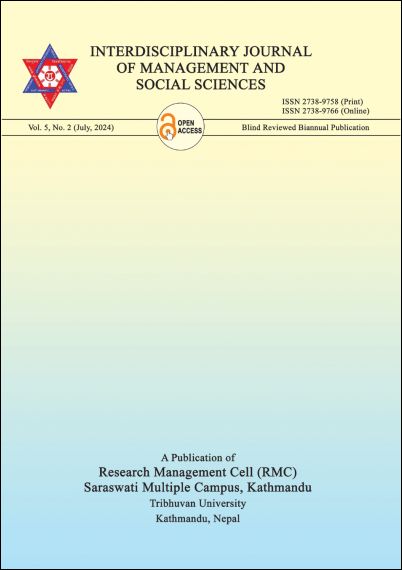Remittance to Strengthen the Alternative Rural Development Perspective in Nepal: How is this Possible?
DOI:
https://doi.org/10.3126/ijmss.v5i2.69459Keywords:
Alternative Rural Development, governance of remittance, Remittance, Nepali economyAbstract
Remittance sector is blamed for its weak role in the industrial growth in Nepal, and this sector is largely affected due to the global COVID-pandemic. In this study, we analyzed the household and social level use of remittance by the Nepali households before and after the pandemic in 2019 to 2021. We adopted cross-sectional study design to collect data from 777 randomly selected respondents residing in three municipalities in mountain, hill, and plain geographies in Nepal. Our findings agreed that in the current economic situation remittance is unable to increase the agriculture production and distributions and increase entrepreneurship development in the local levels. We need policy revisions by incorporating four priorities in Nepali remittance policies which are i) studying the short-term and long-term impact of remittance, ii) developing inter/national level investment and market expansion, iii) enlarging internal and external motivation for investment, and iv) prioritizing local stakeholders' motivation for investment. This policy adjustment will institutionalize the remittance sector to strengthen the alternative development practices in the country. This study is a reference for developing evidence-based policies to mainstream remittance as a major game-changer of economic growth in developing countries such as Nepal.
Downloads
Downloads
Published
How to Cite
Issue
Section
License

This work is licensed under a Creative Commons Attribution-NonCommercial 4.0 International License.

